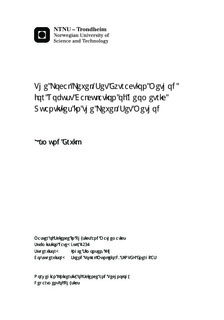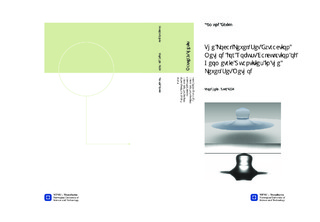| dc.description.abstract | The level-set method is an implicit interface capturing method that can be used in two or more dimensions. The method is popular e.g. in computer graphics, and as here, in simulations of two-phase flow. The motivation for the simulations performed here is to obtain a better understanding of the complex two-phase flow phenomena ocurring in heat exchangers used for liquefaction of natural gas, including the study of droplet-film interactions and coalescence.One of the main advantages of the level-set method is that it handles changes in the interface topology in a natural way. In the present work, the calculation of the curvature and normal vectors of an interface represented by the level-set method is considered. The curvature and normal vectors are usually calculated using central-difference stencils, but this standard method fails when the interface undergoesa topological change, e.g. when two droplets collide and merge. Several methodshave previously been developed to handle this problem. In the present work,a new method is presented, which is a development on existing methods. The newmethod handles more general cases than previous methods. In contrast to someprevious methods, the present method retains the implicit formulation and can easily be extended to three-dimensional simulations, as demonstrated in this work.Briefly, the new method consists in extracting one or more local level sets forbodies close to the grid point considered, reinitializing these local level setsto remove kinks, and using these to calculate the curvature and normal vector atthe grid point considered. For the curvature, multiple values are averaged,while for the normal vector, the one corresponding to the closest interface isselected.With this new method, several two-phase flow simulations are performed that arerelevant for understanding the liquefaction of natural gas. The new methodenables simulations that are more general than previous ones. A two-dimensionalsimulation was performed of a 0.6 mm diameter methanol droplet falling through air and merging with a deep pool of methanol. The new method gave good results in this case, but unphysical oscillations in the pressure field rendered this result unsuitablefor comparison with experimental results.Several similar cases with significantly lower density differences between thetwo fluids were also considered; in these cases, the pressure field behavedphysically, but the results are less applicable to the understanding of naturalgas liquefication, and better suited for validation of the new method. Inparticular, an axisymmetric simulation of a 0.11 mm diameter water droplet in decanemerging with a deep pool of water has been considered. The results of thissimulation show a very close agreement with experimental data. Attempts werealso made to simulate a larger droplet, but in this case finer grids were neededthan what could be achieved here due to the computational time cost of gridrefinement. Purely geometrical results are also presented in order to validate the results of the new method, and three-dimensional results are given for a static interface configuration, demonstrating that the method is easily extended to higher dimensions. | nb_NO |

